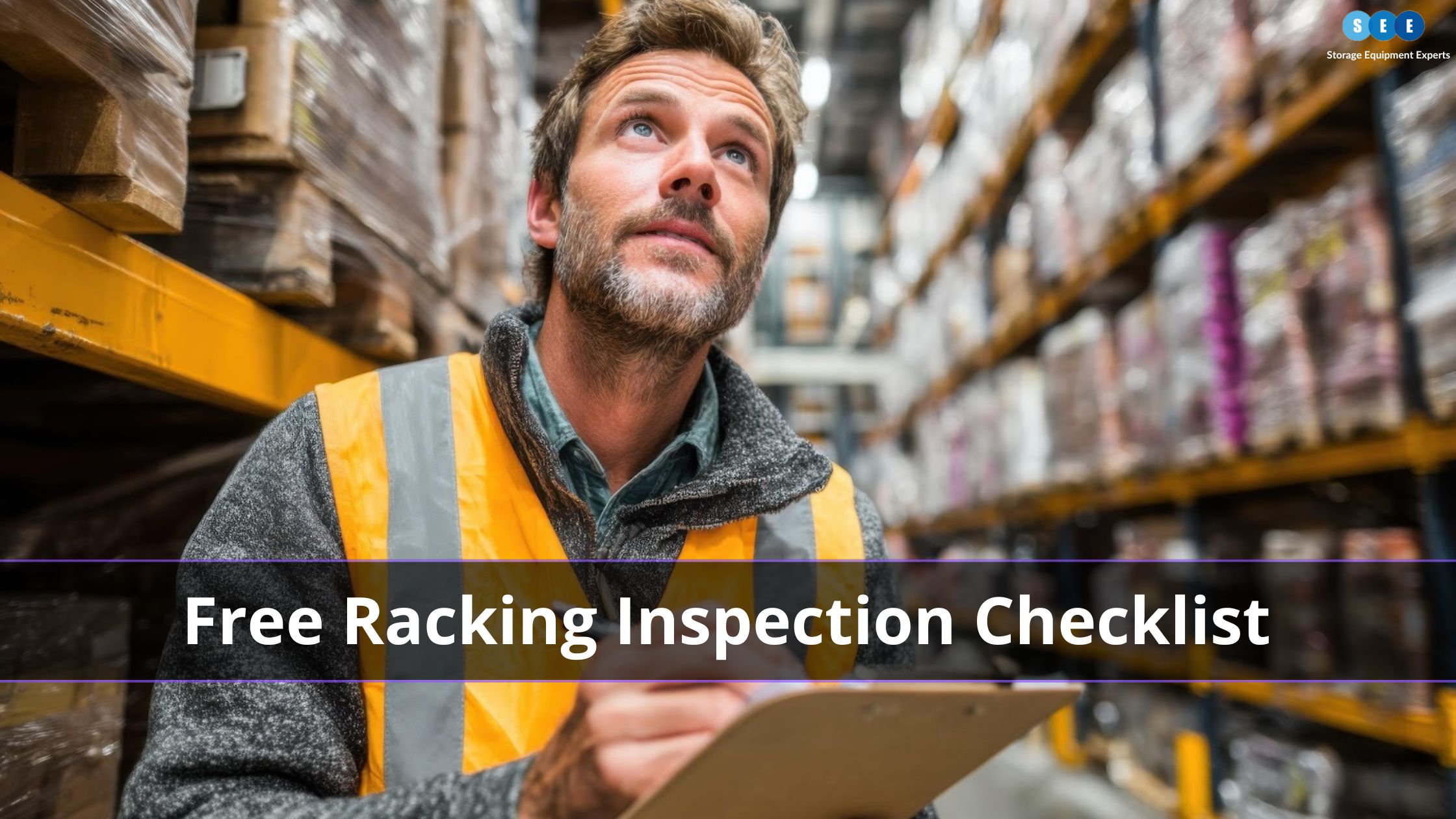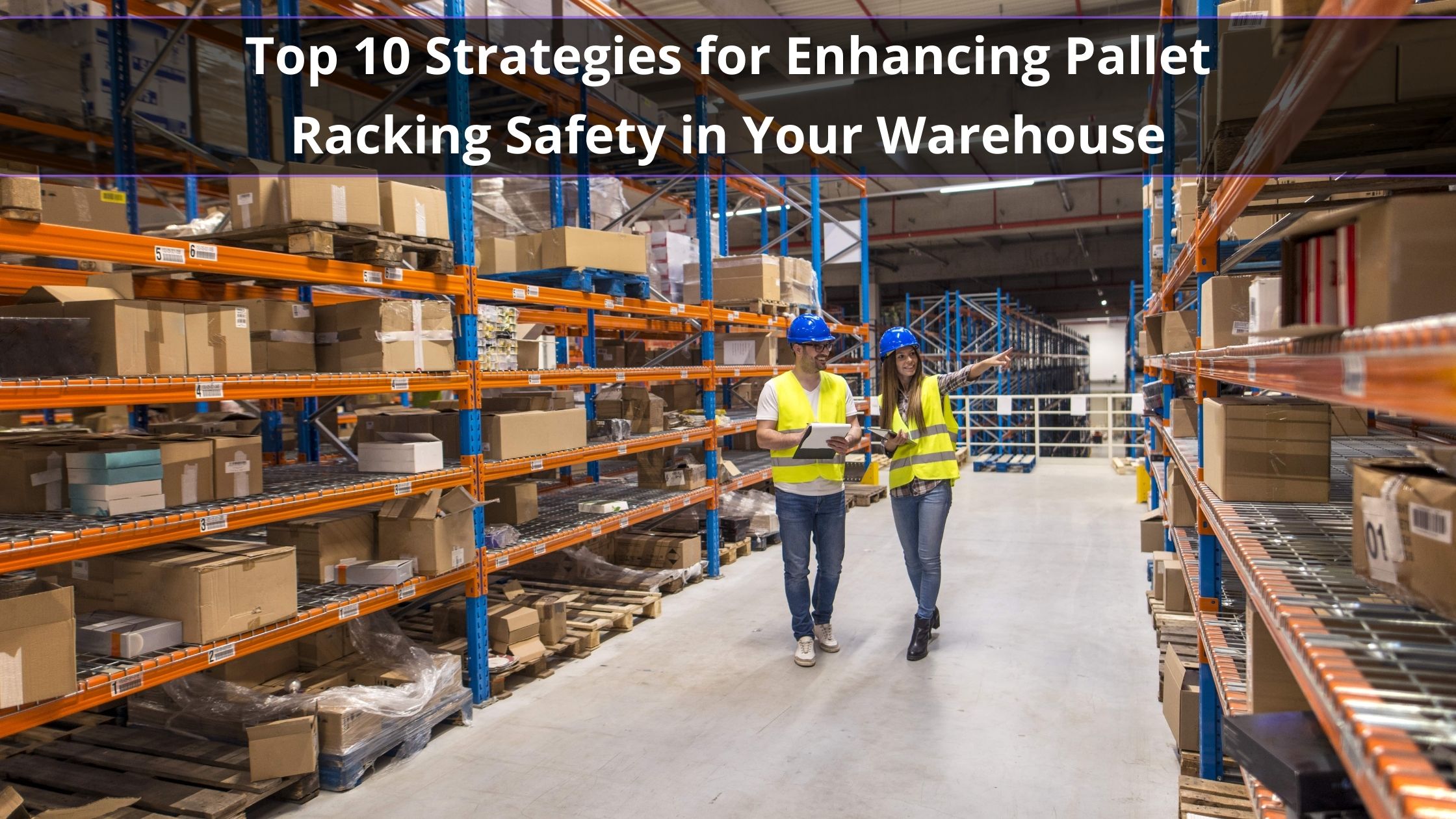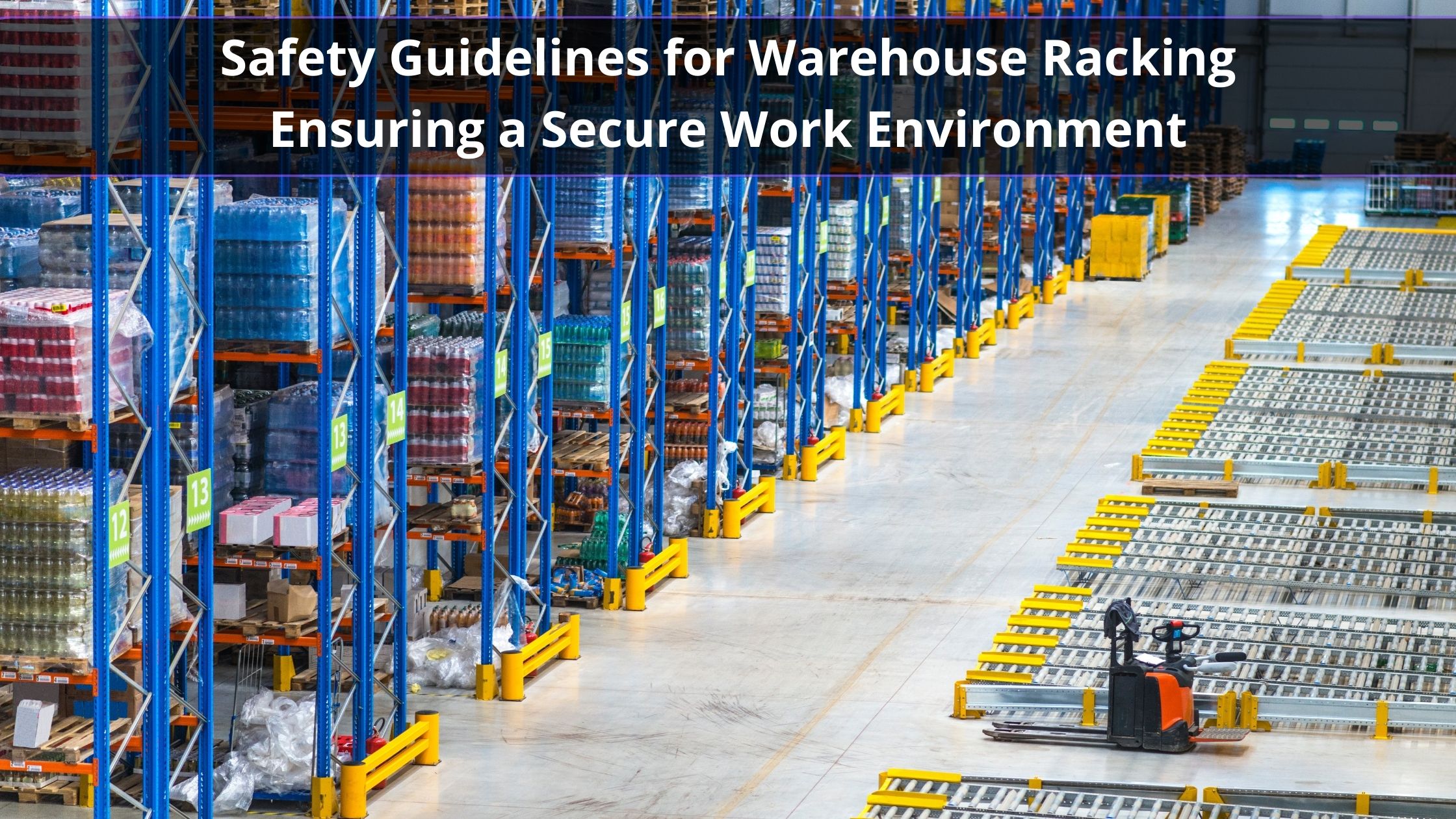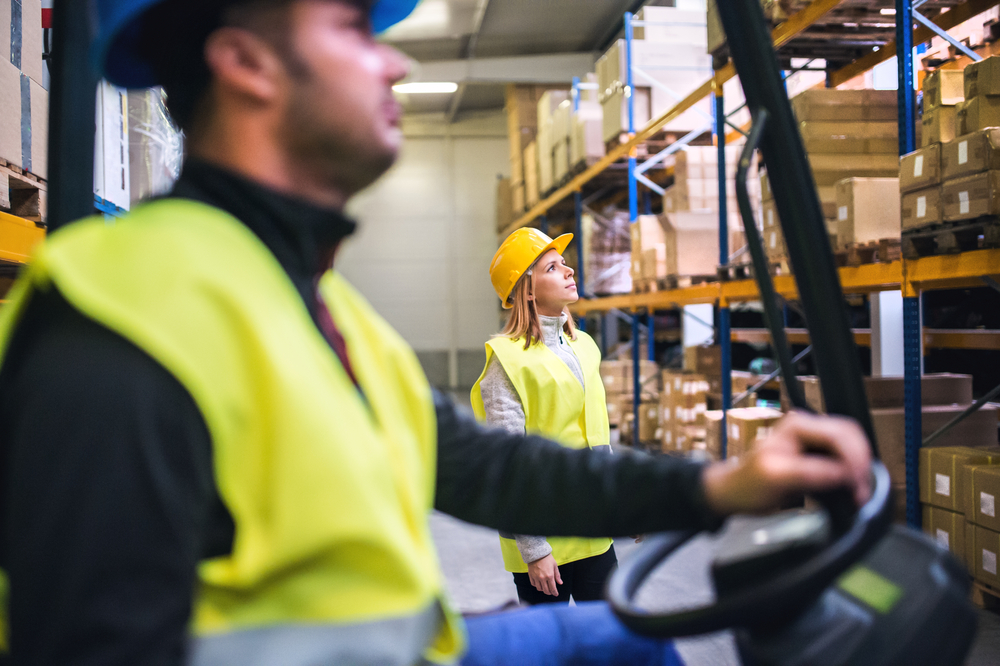Improve Warehouse Safety with SEE Racking Inspections’ Free Checklist
At SEE Racking Inspections, we’ve distilled decades worth of warehouse safety expertise into a comprehensive, highly effective – and free – racking inspection checklist. Created by SEMA-approved racking inspectors, our checklist allows businesses to maintain rigorous safety standards methodically and cost-effectively.
With over 22,000 of you having downloaded the checklist since we created it, we’re going to take a look at what makes it so useful, how to implement a comprehensive warehouse safety programme that meets regulatory requirements, and how SEE Racking Inspections can help.
Key Takeaways
- Regular racking inspections are an essential step to prevent accidents and help maintain compliance with HSE guidelines, while developing a culture of proactive safety management.
- A well-structured inspection checklist provides a systematic approach to identifying hazards before they escalate into serious safety risks.
- Competent personnel with proper training deliver effective racking inspections to maintain warehouse safety.
- Annual expert inspections complement the regular internal racking inspections, creating a safety system that protects staff, stock, and equipment.
What is a Warehouse Racking Inspection Checklist?
More than just keeping businesses compliant, warehouse safety is one of the main foundations of efficient operations. With every pallet, beam, and upright in your racking system being a variable in the safety equation, businesses need an organized and accurate way to keep track of it all.
And that’s precisely what our free racking inspection checklist gives you.
Our checklist can be printed A4 size, attached to a clipboard and used to easily and quickly record any issues found whilst completing the inspection of your warehouse pallet racking systems. A ten page guide accompanies our checklist to give the user with step by step instructions on how to use the checklist with explanations of the various terminology used and reference images and diagrams to provide clarity on what to look out for and how to measure and categorise the risk level of any concerns found.
Our structured document guides warehouse personnel through a methodical examination of pallet racking systems, making sure no component goes unchecked and fulfilling HSE’s recommendations outlined in HSG76. When systematically documented, these internal inspections create a solid safety monitoring programme that complements annual expert assessments by a SEMA Approved Racking Inspector.
A properly designed checklist does more than tick boxes – it serves as a comprehensive guide throughout the inspection process. A well-designed checklist incorporates precise terminology, follows a logical sequence, and helps identify potential hazards before they develop into serious safety risks.
Beyond its practical function, a checklist serves as tangible evidence of a warehouse’s commitment to safety – a valuable tool that demonstrates compliance and helps maintain a proactive approach to risk management.
Essential Elements of an Effective Inspection Checklist

A secure PDF format ensures your checklist remains intact across devices while maintaining its professional format. Through clear, organised columns make it easy for your internal inspectors to methodically track their progress and maintain detailed records of each racking inspection.
Most important is the language used. Checklists built around precise technical language, as opposed to vague descriptions, deliver the industry-standard terminology and precision that leaves no room for misinterpretation. This technical accuracy shouldn’t come at the expense of clarity, however, with the best checklists remaining accessible to both experienced inspectors and general warehouse staff.
Visual aids prove particularly effective, also, especially for those newer to warehouse operations. Diagrams and reference images help keep the inspection clear, helping to deliver thorough coverage of all key areas.
Finally, independence matters a great deal. A checklist designed by impartial specialists, rather than racking suppliers, provides unbiased safety recommendations focused solely on protecting your warehouse and its workers.
What makes SEE Racking Inspections’ Checklist so Valuable
As an independent inspection company that neither sells nor repairs racking, we focus exclusively on safety and compliance. This independence allows us to offer truly unbiased guidance, free from any commercial interests.
Our SEMA-approved racking inspectors have drawn on their extensive field experience to create a checklist that addresses both regulatory requirements and real-world challenges. A complementary infographic demystifies technical terminology, showing exactly where components are located and how they should function.
Since its launch, our checklist has gained a huge measure of trust across the industry, with over 22,000 downloads (if there was a Spotify chart for racking checklists, it would probably be number 1). What we can tell you for sure, though, is that quality managers and logistics directors consistently praise its practical utility and comprehensive coverage.
Beyond the checklist itself, we provide detailed implementation guides that help businesses meet PUWER 1998 requirements. Regular updates keep you aligned with the latest safety standards, while our decision to offer this resource free of charge reflects our continued focus on promoting warehouse safety throughout the UK and Ireland.
How to Access and Implement Your Free Checklist
Getting started with our checklist takes just minutes. Visit our website’s dedicated checklist page and complete a straightforward form – and your PDF document will arrive directly in your inbox, along with occasional safety updates (that you can opt out of at any time).
Pop-up blockers can occasionally interfere with the download process. If you encounter issues, temporarily disable these features for our site to ensure successful delivery. Once downloaded, the checklist integrates seamlessly with HSE’s traffic light system as referenced in HSG76, providing a consistent framework for damage assessment.
Each checklist comes with comprehensive implementation instructions, with these guidelines designed to support everyone from seasoned professionals to those just beginning their safety journey.
The moment you receive your checklist, you can begin improving your warehouse safety protocols, our structured approach allowing you to conduct high quality internal racking inspections from day one.
The Vital Role of Training in Racking Inspections
Even the most carefully designed checklist requires staff training to be effective. HSE guidelines are fairly clear on this: internal inspections must be conducted by “competent” individuals who truly understand racking systems.
In the warehouse environment, familiarity with equipment doesn’t automatically translate into inspection competence. That’s why we’ve developed specialised one-day training courses, conducted by SEMA-approved inspectors and assured by RoSPA.
Our training goes beyond basic inspection techniques. Forklift operators learn how their daily operations impact racking integrity, while maintenance teams master the safe replacement of damaged components. These courses, delivered by dual-certified experts in both pallet and cantilever racking systems, provide comprehensive coverage of safety protocols.
Our flexible training options are accessible across the UK, Ireland, and online. We provide certifications that remain valid for three years, which allow your staff to confidently identify and categorise damage according to the traffic light system.
Complementing Internal Checks with Expert Inspections
While regular internal inspections form the backbone of warehouse safety, HSE rules require businesses to have professional inspections performed by qualified experts at least once a year. Our SEMA-Approved Racking Inspectors (SARI) bring specialised equipment and extensive cross-warehouse experience to detect subtle damage patterns that might escape notice during routine checks.
These expert inspections are essentially an annual health check-up for your warehouse, with our assessments often identifying issues before they escalate into costly repairs or catastrophic failures. Our SARI inspectors provide detailed reports that specify exactly which components need attention, helping you maintain both safety and operational efficiency.
In high-traffic warehouses, waiting a full year between expert inspections might not be enough. It’s for this reason that we maintain a network of SEMA-approved inspectors across the UK, Ireland, ready to provide additional assessments whenever needed.
An independent warehouse racking inspection offers another major benefit: peace of mind. Directors and managers can rest assured that their facilities meet legal requirements and maintain the highest safety standards. Unlike supplier inspections, our recommendations focus solely on safety, never on selling new equipment.
Take the Next Step Toward a Safer Warehouse Environment

Join the thousands of businesses that are already benefiting from our racking inspection checklist, and transform your warehouse into a beacon of operational safety. Download your free checklist and begin implementing professional-grade safety protocols quickly and clearly.










